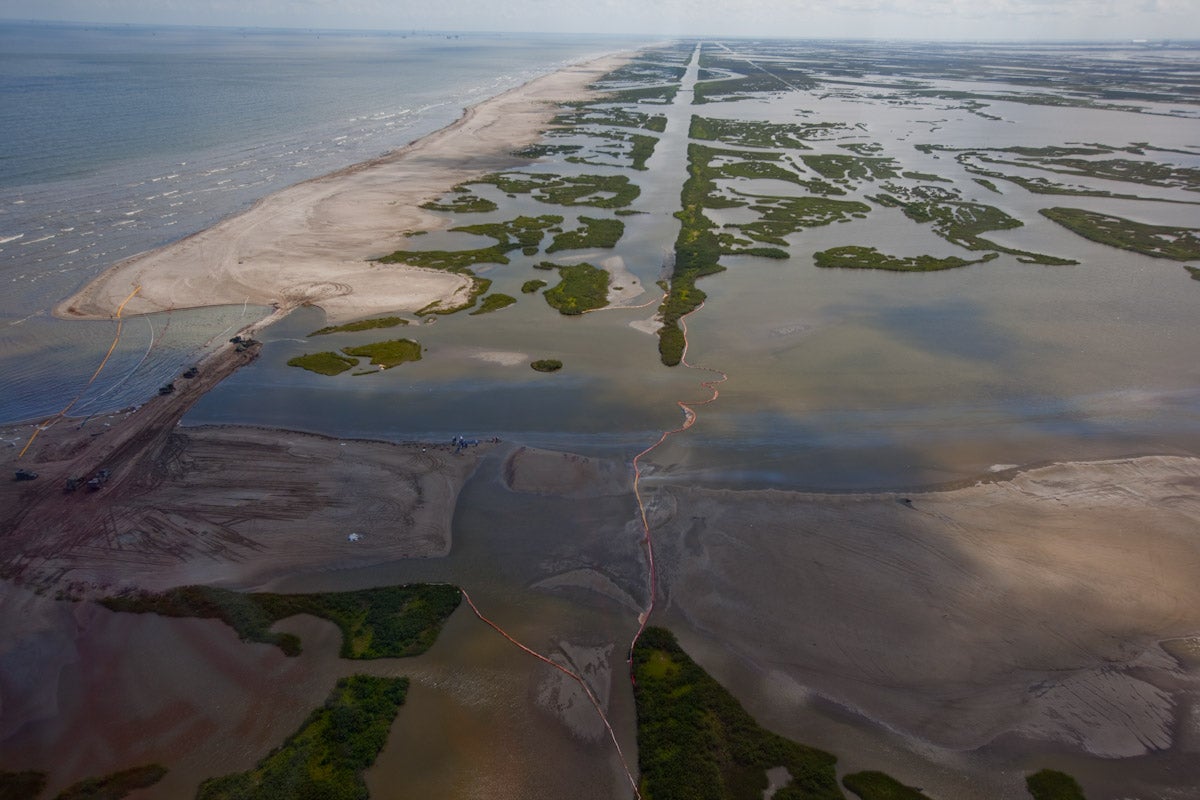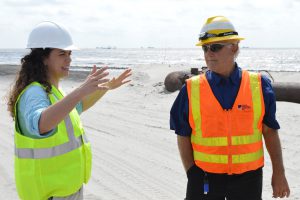Louisiana’s Coastal Master Plan is the state’s blueprint for coastal restoration and protection, containing a mix of risk reduction and coastal restoration projects spread across the entire coastal zone. Updated every five years, the 2017 master plan has an estimated cost of $50 billion over 50 years. Given limited funding and resource constraints, the plan is a realistic prioritization of what can be accomplished during the 50-year timeframe.
To rebuild and fortify our coast in the face of increased sea level rise and storms, this funding challenge must be met head on. There are a number of sources available to help pay for coastal restoration in Louisiana, but to fully restore and protect our coast, additional funding will need to be secured and existing funding must be protected.
Natural Resource Damage Assessment (NRDA)
NRDA is the federally-administered damage assessment and restoration process used to determine damages caused by an oil spill and to restore natural resources. The total Deepwater Horizon NRDA settlement was $8.8 billion, and Louisiana will receive $5 billion of those funds, to be used for ecosystem restoration. $4.3 billion of these funds will be used to restore and conserve habitat, while the remaining funds will be used to replenish and protect living coastal and marine resources ($343 million); for monitoring, adaptive management and administration oversight ($258 million); to provide and enhance recreational opportunities ($60 million); and to restore water quality ($20 million).
NFWF Gulf Environmental Benefit Fund
The National Fish and Wildlife Foundation (NFWF) Gulf Environmental Benefit Fund was established in 2013 following the Gulf oil disaster. The fund contains $2.544 billion, half of which ($1.272 billion) is to be spent in Louisiana on barrier island restoration and sediment diversion projects.
RESTORE Act
 Following the BP oil disaster, in 2012, the federal Resources and Ecosystems Sustainability, Tourist Opportunities, and Revived Economies of the Gulf Coast States (RESTORE) Act was signed into law. This law ensures that 80 percent of all Clean Water Act penalties stemming from the spill flow through the RESTORE Act and are used for Gulf Coast restoration.
Following the BP oil disaster, in 2012, the federal Resources and Ecosystems Sustainability, Tourist Opportunities, and Revived Economies of the Gulf Coast States (RESTORE) Act was signed into law. This law ensures that 80 percent of all Clean Water Act penalties stemming from the spill flow through the RESTORE Act and are used for Gulf Coast restoration.
Funding flows through the RESTORE Act via three “pots”:
- Pot 1 evenly distributes 35 percent of RESTORE funding directly to the Gulf states.
- Pot 2 allocates 30 percent of funding to ecosystem restoration projects selected by the RESTORE Council.
- Pot 3 distributes 30 percent of funding to the Gulf states based on an oil spill impact allocation
formula.
Louisiana is set to receive more than $930 million in RESTORE Act funding. Louisiana has committed to use all of its Pot 1 and 3 funding on the Coastal Master Plan. Via Pot 2, Louisiana has received an additional $52.2 million to fund coastal restoration projects included in the RESTORE Council’s Funded Priorities List, which includes marsh creation, hydrologic restoration and beach nourishment projects.
 Gulf of Mexico Energy Security Act (GOMESA)
Gulf of Mexico Energy Security Act (GOMESA)
GOMESA was signed into law in 2006 and shares 37.5 percent of qualified outer continental shelf oil drilling revenue with oil-producing Gulf states. To date, more than $30 million has been distributed to the Gulf states via GOMESA Phase I. Louisiana will receive an estimated $176 million per year (approximately $8.5 billion total) in GOMESA funds during Phase II. Thirty percent of this funding will go directly to parishes, and the majority will go to the Coastal Protection and Restoration Authority (CPRA).
Coastal Wetlands Planning Protection and Restoration Act (CWPPRA)
CWPPRA was enacted in 1990 to provide funding for Louisiana wetlands restoration. Louisiana currently receives more than $80 million per year (approximately $4 billion total) through CWPPRA.
Additional sources of funding
Other sources of funding for Louisiana coastal restoration include the Energy and Water Act (Corps Funding), Coastal Impact Assistance Program (CIAP), carbon and nutrient credits, future state funding and Louisiana’s Coastal Protection and Restoration Fund.
CHANGING RESTORATION COSTS
Restore the Mississippi River Delta, in conjunction with Coast Builders Coalition, released an analysis prepared by The Water Institute of the Gulf that outlines opportunities for the state of Louisiana to achieve substantial cost savings as it advances its master plan.
The analysis, “Changing Restoration Costs,” analyzes the opportunities that exist for the state to achieve substantial cost savings, particularly related to marsh creation projects over time.